I have owned and used many different types of medium format cameras (TLR, SLR, folder, rigid body rangefinder), and I enjoy all of them for different reasons. But this article is specifically about medium format folders, which provide a large negative in a compact and travel friendly form factor. Sometimes they are not much bigger or heavier than a 35mm rangefinder, while producing almost six times the film area.
In order to achieve the compact size, folders do have several inherent weaker points compared to a rigid body camera. For example, the bellows might deteriorate and suffer from light leaks, the lens struts might get out of alignment with the film plane, and the linkage between the shutter release button and shutter might break down. Depending on the mechanism, focusing might be off as well.
Therefore, I decided to try out as many different models and makes as possible, in order to find the folder that is “ideal” for my purpose.
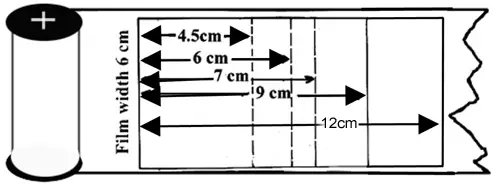
Which Frame Format
The most popular formats for medium format folders are 6×4.5, 6×6, and 6×9. The smallest folders that only support 6×4.5 format, typically have a portrait orientation in film mask and viewfinder.
On the other extreme, 6×9 folders naturally have a landscape orientation. Often, 6×9 folders also support smaller formats like 6×4.5 and 6×6 by providing the proper masks and frame counting mechanism (either automatic or via the additional red window). If you are lucky enough to find a 6×9 folder with additional masks, then you basically own several cameras in one.
Since I already have 6×6 format in TLR and SLR, I decided to focus my search on 6×9 folders.
Naughty Kodak
Most of the 6×9 folders I will cover in this article will use the most common 120 film, which is still available today. But I have to mention a few now obsolete film formats such as 620 and 616. They were all produced by Kodak, either for patent protection or customer lock-in, without any clear customer benefits. 620 film is almost identical to 120 film, except the spool. Thus enthusiasts can easily re-spool modern and fresh 120 film onto 620 spools. The reward for that inconvenience is that you might be able to score several excellent cameras for the cost of a Big Mac meal. Therefore I include a few 620 cameras in my search as well.
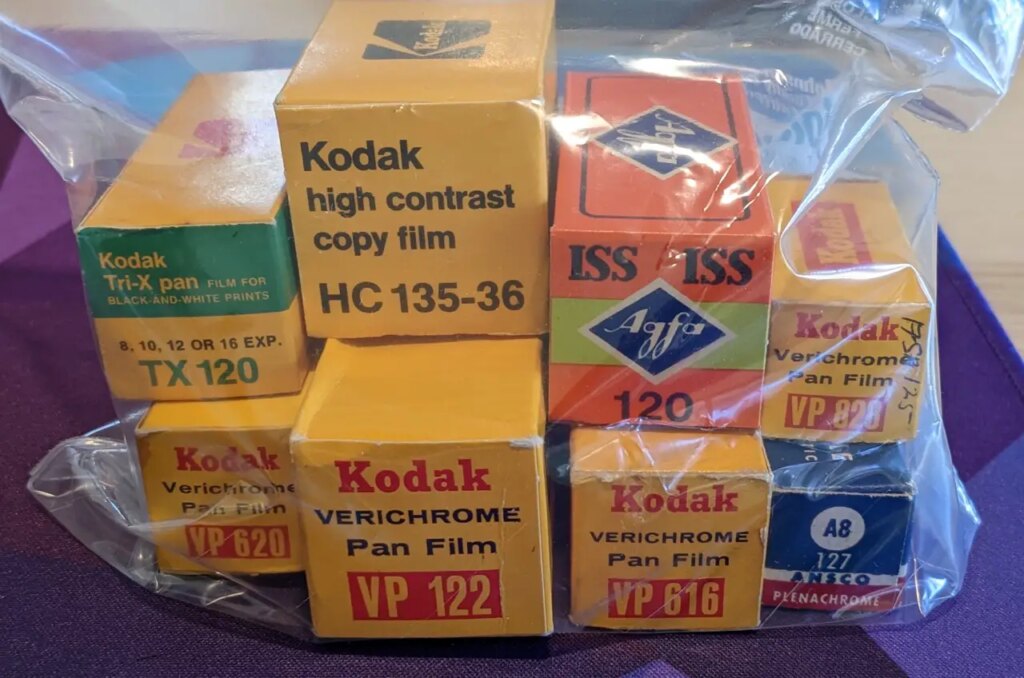
Old or new
There is a huge cost difference between old folders (produced before the 1950s) and new folders (produced in the last two decades, such as Fuji/Voigtlander GF670). So the search will be on the older folders. Good news is that they have been produced over a very very long period of time (1900 – 1950), so there are huge varieties of choices.
The contenders
Before I enlist all the candidates, I have my simple requirements. It has to be reasonably cheap (ideally under $100 in excellent working condition), relatively easy to find, 6×9 format, has full manual control, and sports a good quality lens. Naturally the photographer will be the ultimate decider, but I will leave the Lo-Fi cameras for another article.
So here is the list of 8 cameras I included for my comparison:
120 models
- Voigtlander Bessa I with Color Skopar
- Zeiss Ikonta C with Tessar 105/4.5 (alternative: Moskva 5 with Industar-22 lens)
- Zeiss Ikon Nettar with Novar Anastigmat 105/4.5
- Agfa Record II with Solinar 105/4.5
- Franka Rolfix with Schneider Radionar 105/4.5
620 models:
- Kodak Monitor with Anastigmat 105/4.5
- Kodak Tourist II with Anaston 105/4.5
- Kodak Tourist II with Anastar 105/4.5
The challenges of 6×9 folders
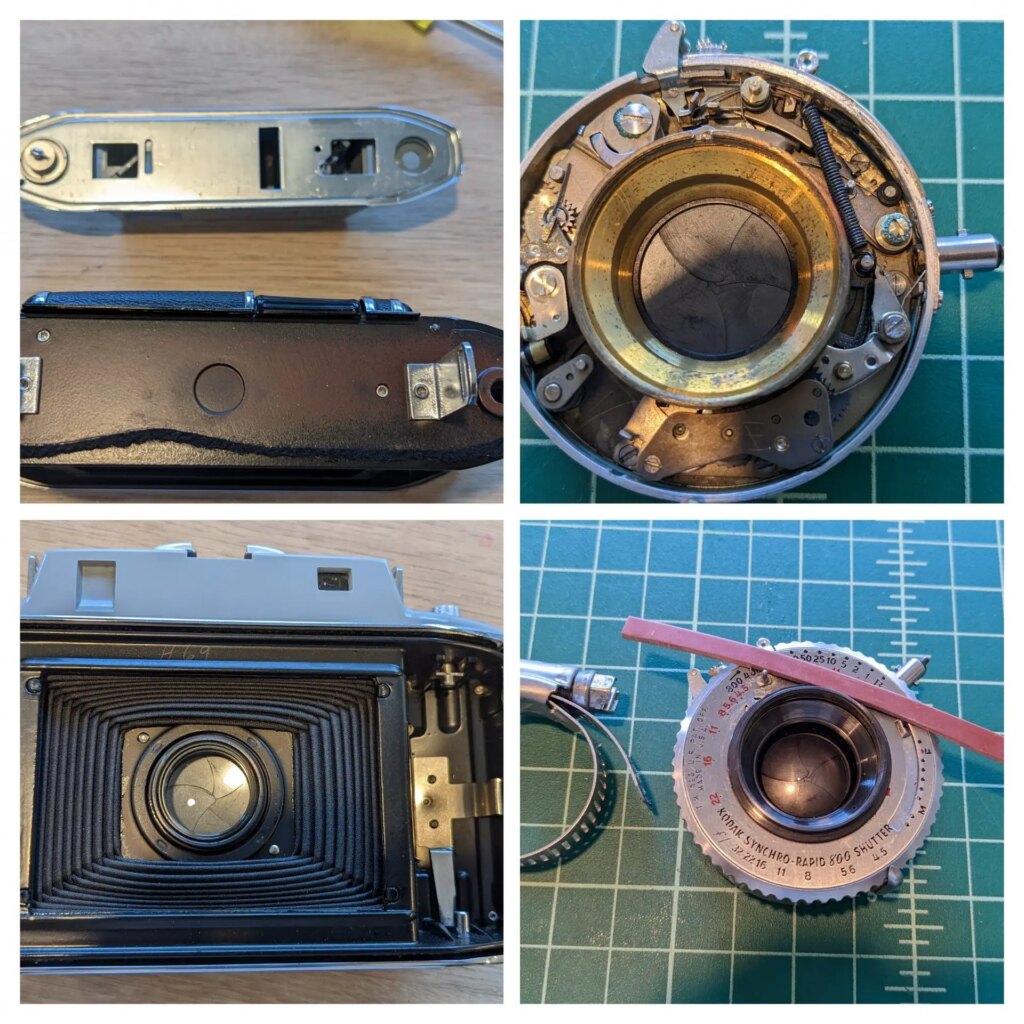
Before I get too excited about medium format folders, I have to realize that it is not the easiest camera to work with. To get best image quality, all the stars have to be aligned:
- The lens is collimated correctly
- The distance is set correctly, either using built-in or external rangefinder
- The struts for propping up the lens is strong and straight
- The front standard or lens board is parallel to the film plane
- There is no light leak in the bellows
- You unfold the camera slowly so the film won’t be vacuum sucked into a curvature
- The camera pressure plate can keep the film flat across the entire 6×9 frame
- You can hold the camera steadily or on a tripod. Some folders have weird places for the shutter release button, and you might not be used to pressing it without shaking the camera.
- The shutter is cocked, and the speeds are decently within spec
- The film is advanced either through the red window or via automatic stop, and not double exposed
Wow, did I just list 10 prerequisites for getting technically excellent photos? Not even counting the artistic aspect. ????
The joy of 6×9 folders
Now we get the challenges out of the way, we can finally appreciate those big beautiful negatives that are full of details, rich in tonality, and high in resolution. And to fully wow yourself, you have to try those massive stunning color slides on a light table. Here are a few example
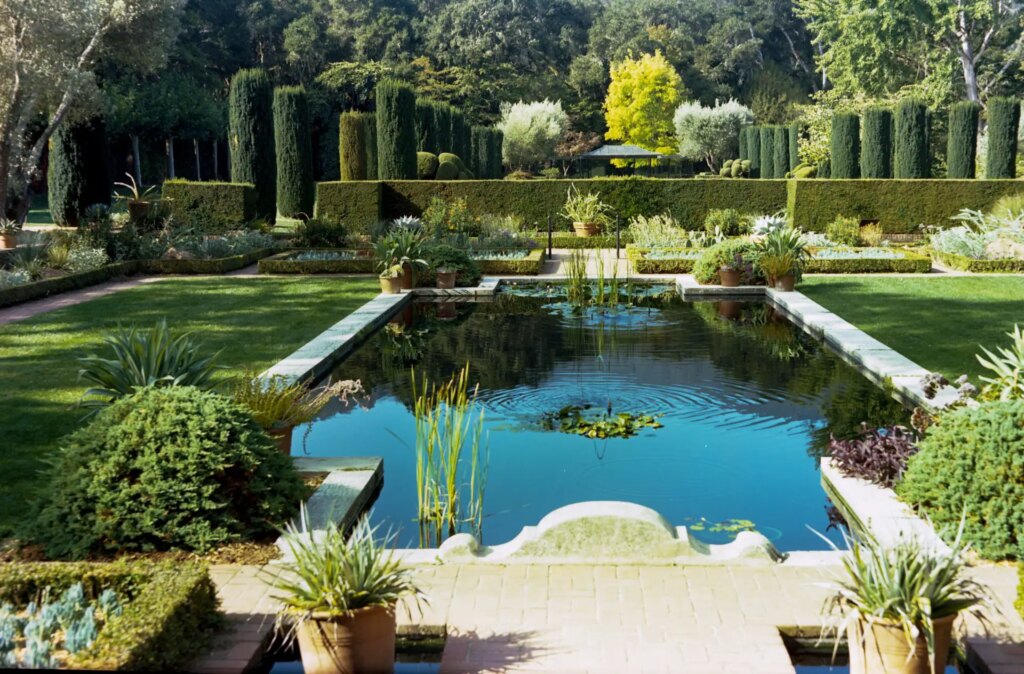
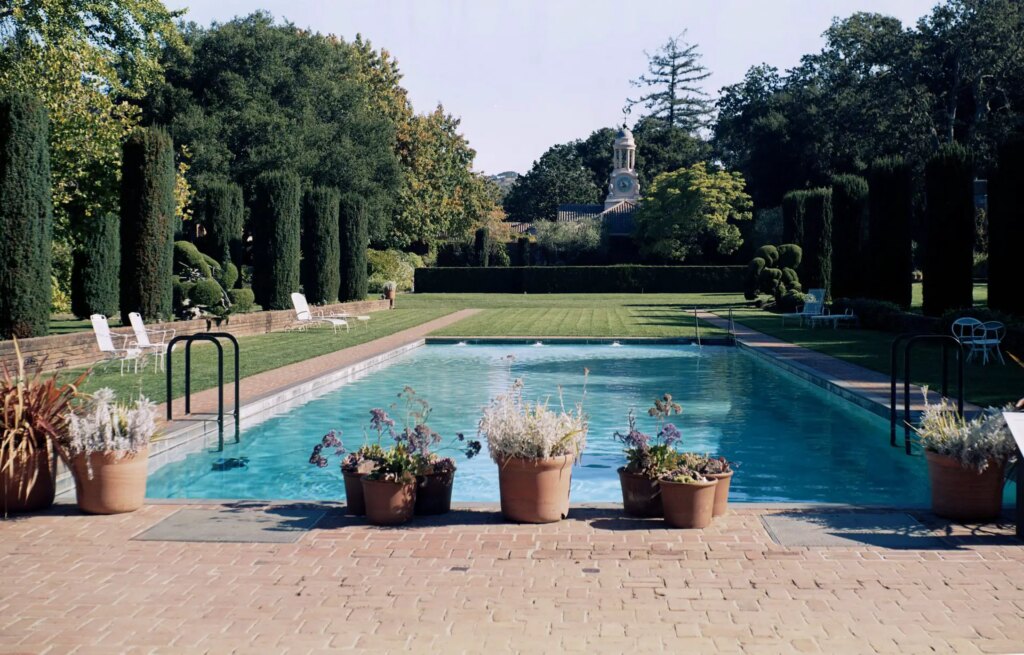
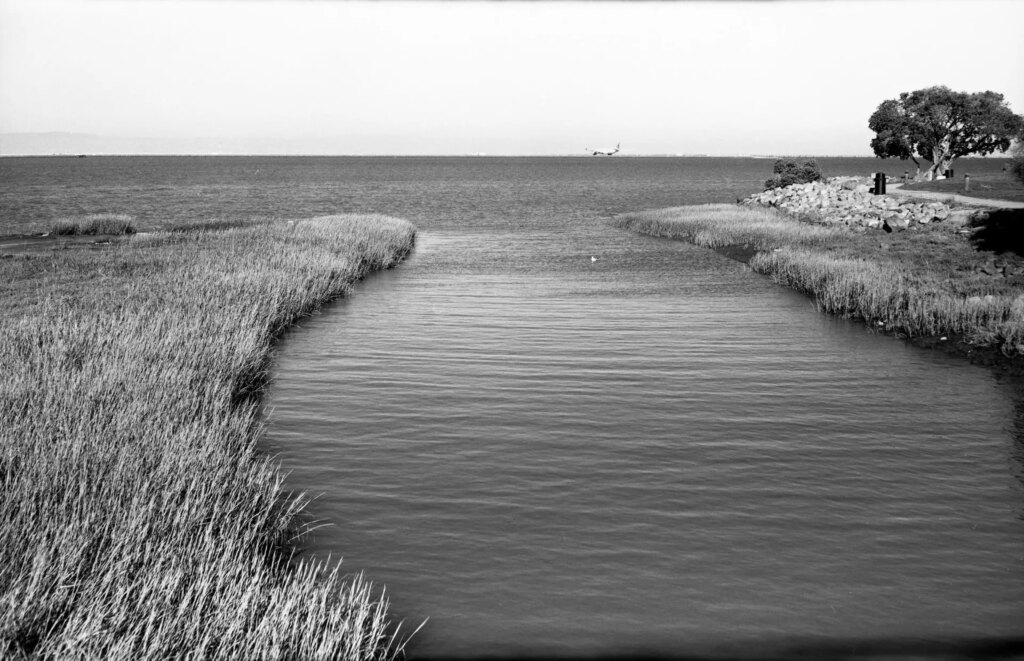
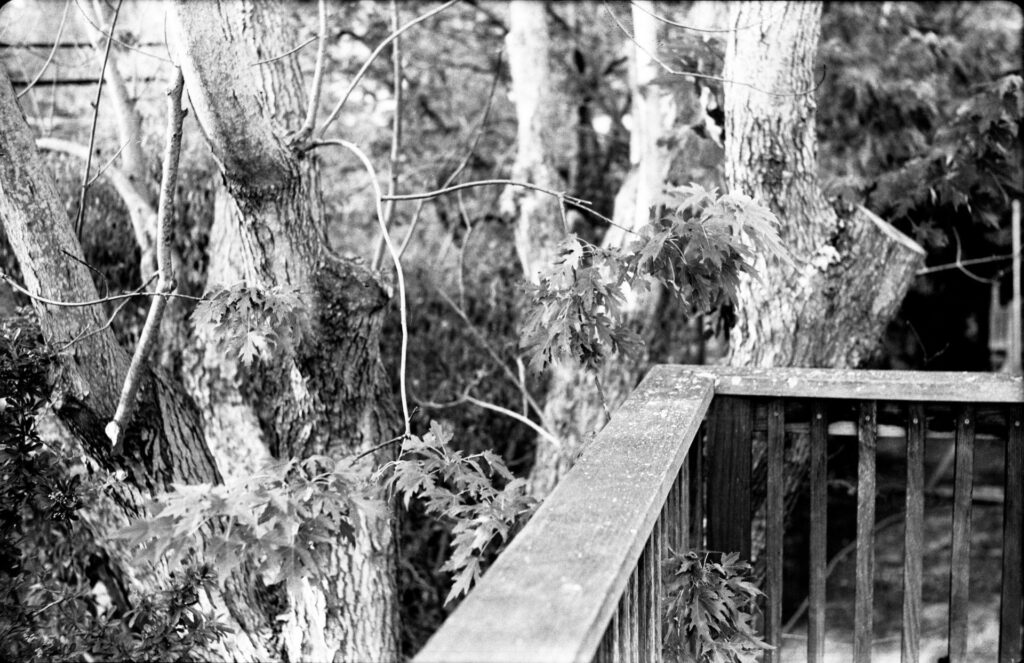
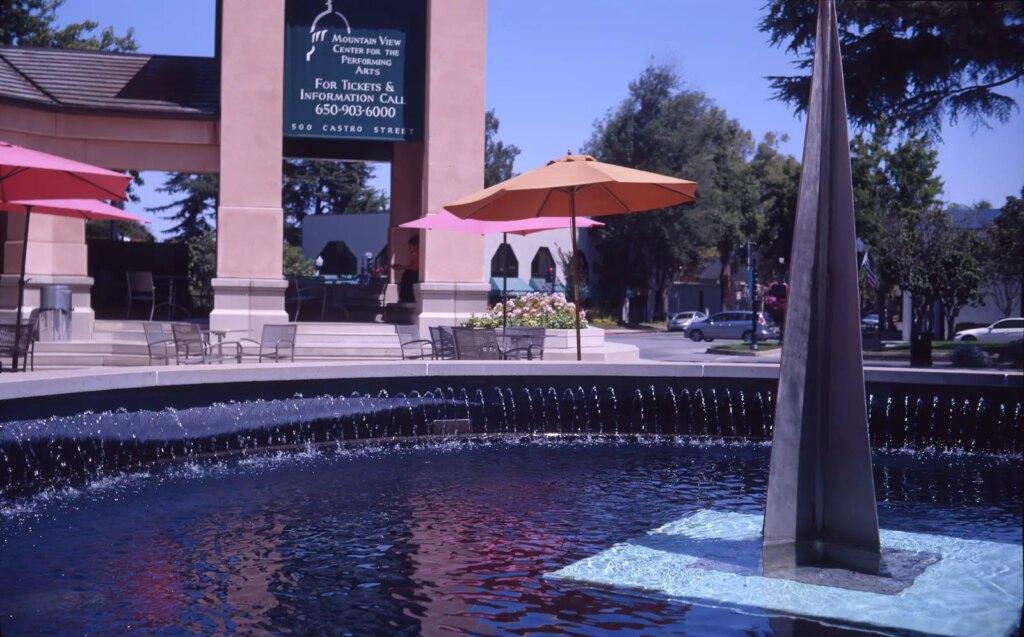
Brief comments on each model
120 models
Voigtlander Bessa I
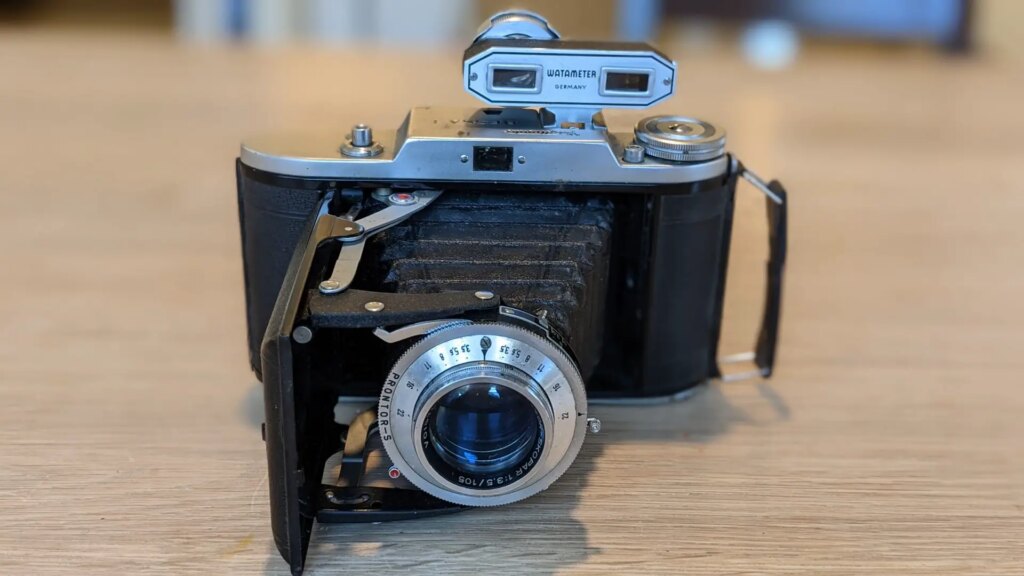
- Top quality Tessar formula lens that can produce highest quality images, good shutter offering full range of shutter speeds.
- Good quality leather bellows
- Most sought after and thus most expensive
- Shutter button on the left hand
- The lens strut is wobbly on my sample
Moskva 5
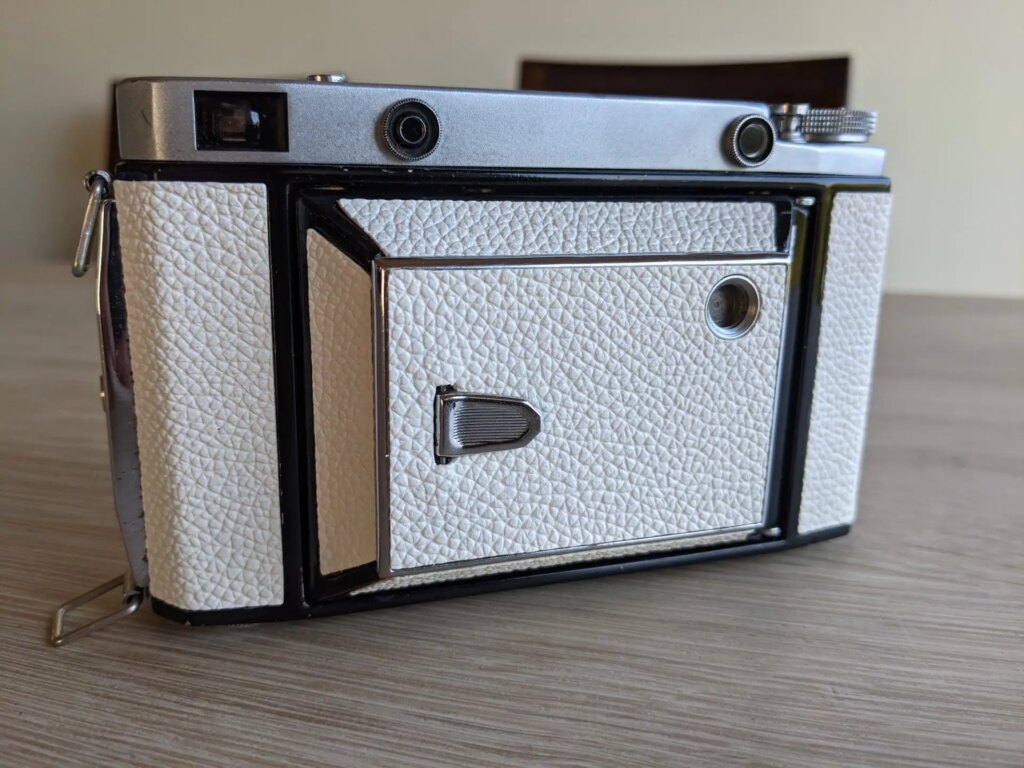
- Coupled rangefinder: when properly aligned can enable precise focusing
- Good quality Tessar formula lens set in a good shutter with full range of shutter speeds
- Solid folding mechanism and construction
- A bit on the heavy and bulky side
Zeiss Ikon Nettar
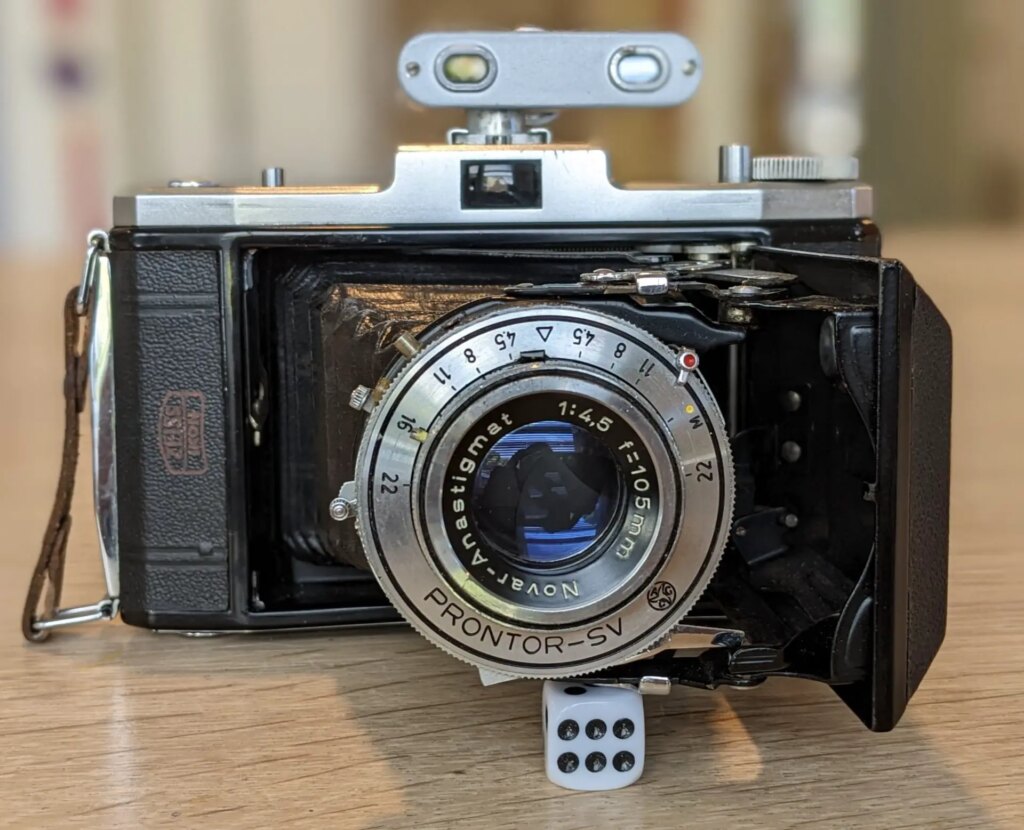
- Good quality triplet lens set in a good shutter with full range of shutter speeds
- Solid folding mechanism and construction
- Good quality leather bellows
- Shutter button on the left hand
Agfa Record II
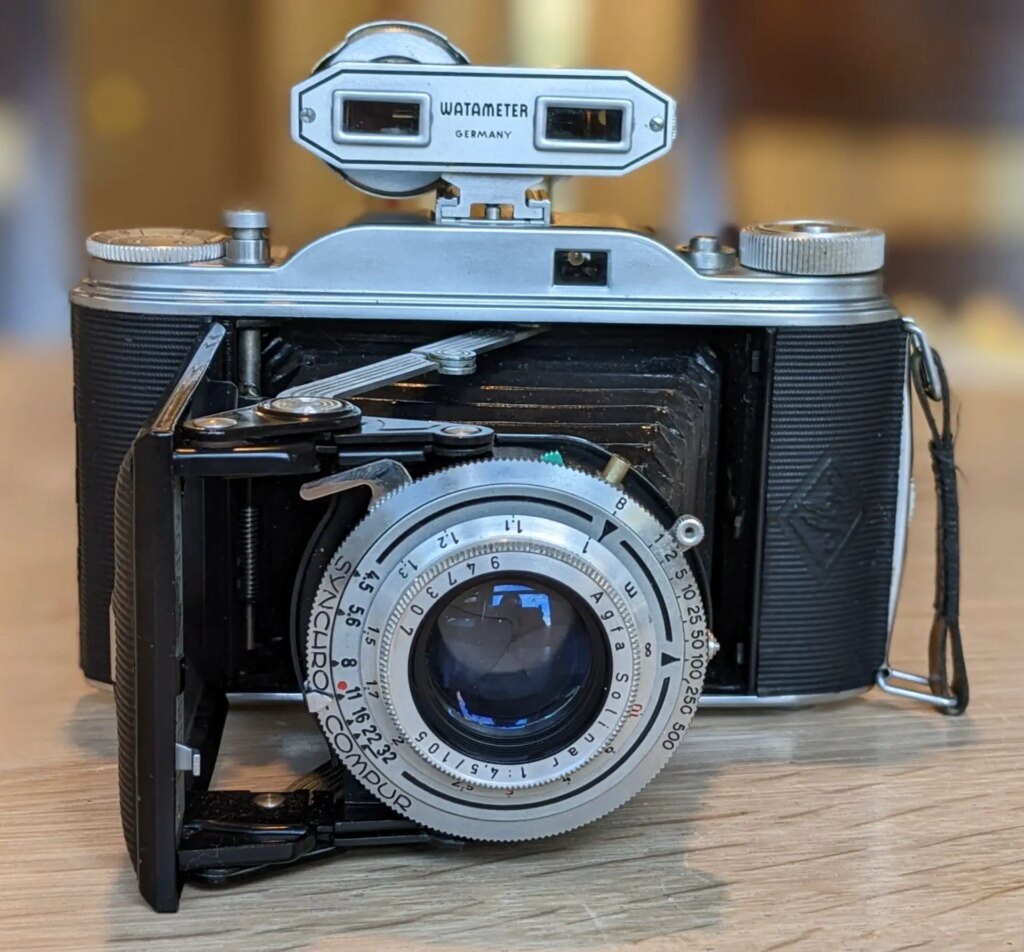
- High quality Tessar formula lens that can produce highest quality images, good shutter offering full range of shutter speeds.
- Double exposure prevention
- Poor quality plastic bellows that are prone to light leaks due to pinholes and cracks
- Green grease of death: the grease used in the front cell focusing helicoid often hardens over time and entirely freezes the focusing. It is feasible to repair by yourself, by using a combination of solvent (e.g. 90% alcohol) and heat (hair dryer).
Franka Rolfix
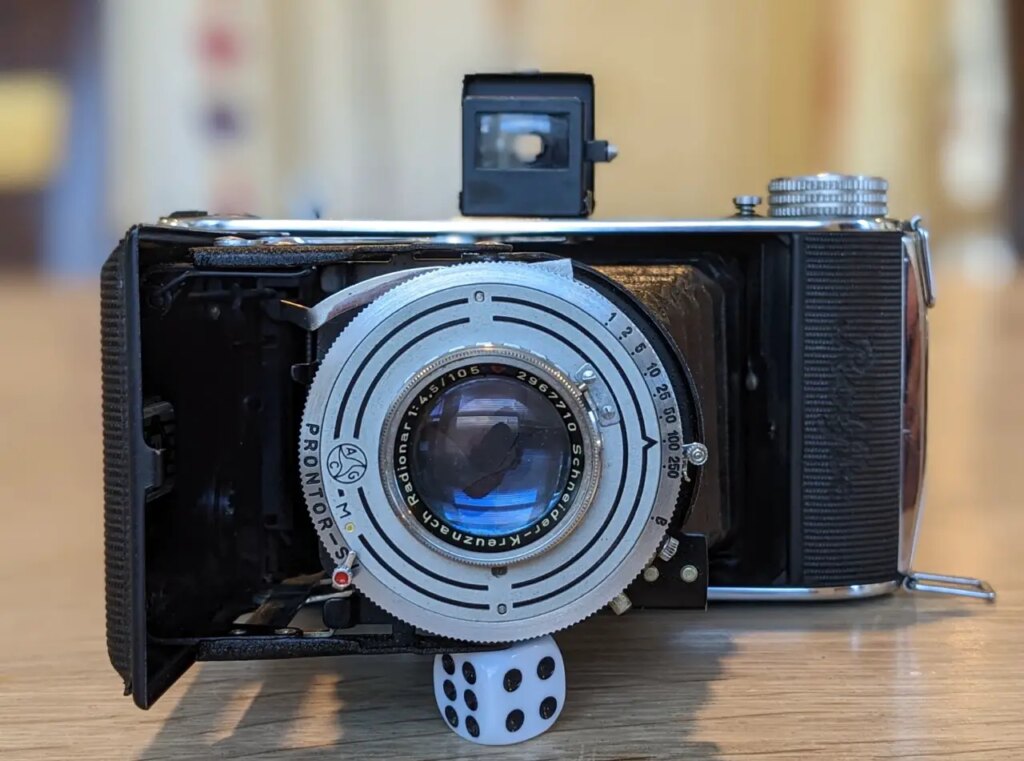
- One of the most compact and lightweight
- Good quality triplet lens set in a good shutter with full range of shutter speeds
- My sample comes with 6×6 mask, dual red window
- No cold shoe
620 models:
Kodak Monitor
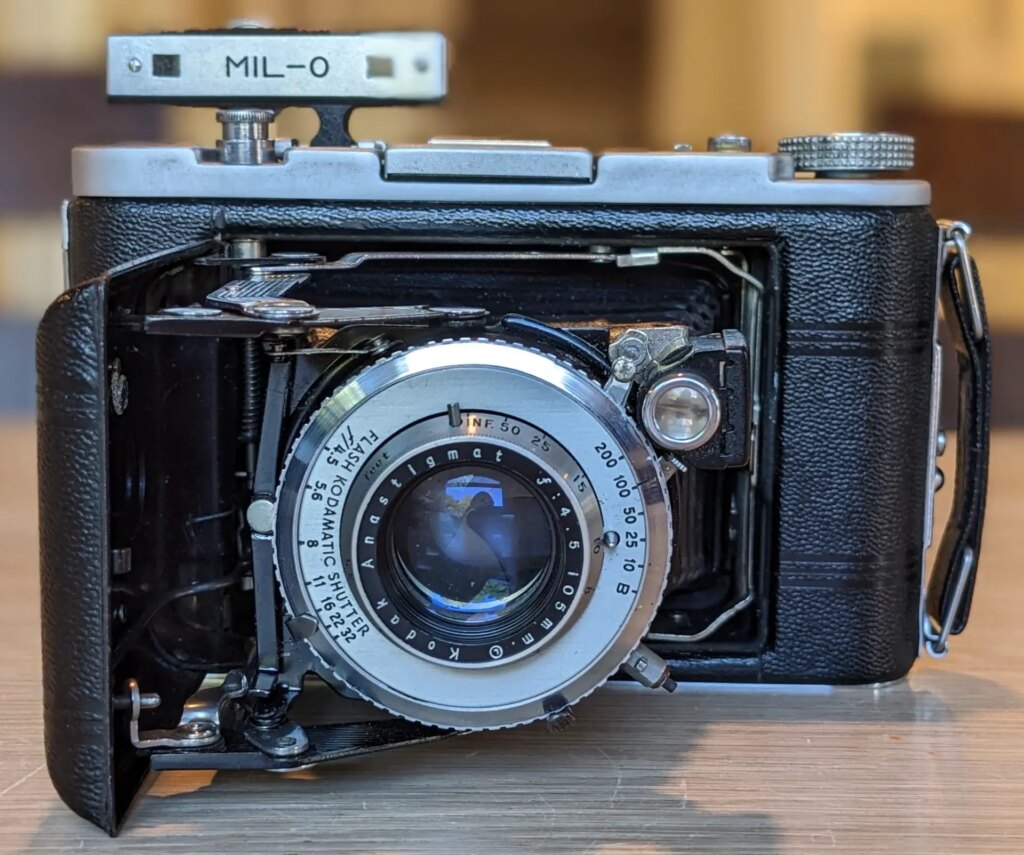
- Excellent quality Tessar formula lens that can produce highest quality images, set in a robust shutter with decent shutter speed selection.
- Full featured camera with automatic frame counting and double exposure prevention.
- The linkage between shutter button and shutter is weak and easily broken down. This happens to my sample, so I have to use a shutter release cable instead.
- One of the heaviest folder
Kodak Tourist II
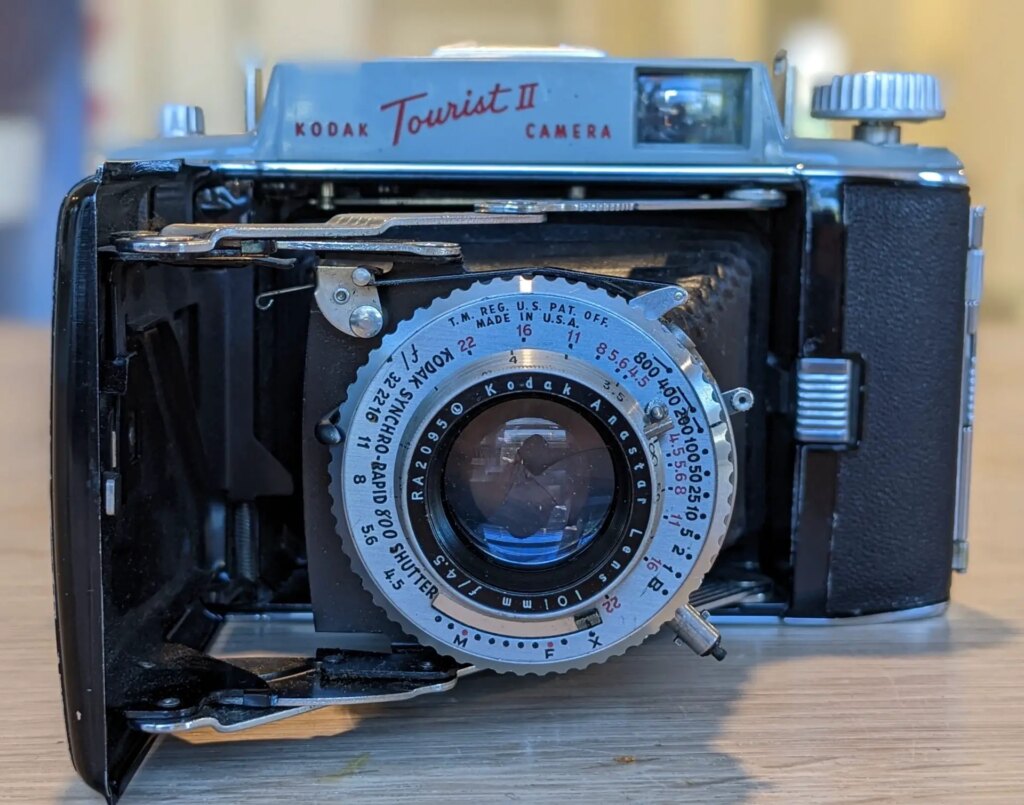
- Excellent quality Tessar formula lens that can produce highest quality images. The Anastar lens is top of the line for Kodak.
- The Anaston is set in a robust shutter with decent shutter speed selection, however the Anastar uses a higher spec yet less reliable shutter called Kodak Synchro Rapid 800.
- Body is one of the largest and some parts are plastic. Not too heavy though.
- Can find interchangeable back to use other formats (such as 6×6 or use 828 film)
- Hot shoe is of odd proprietary type
Summary
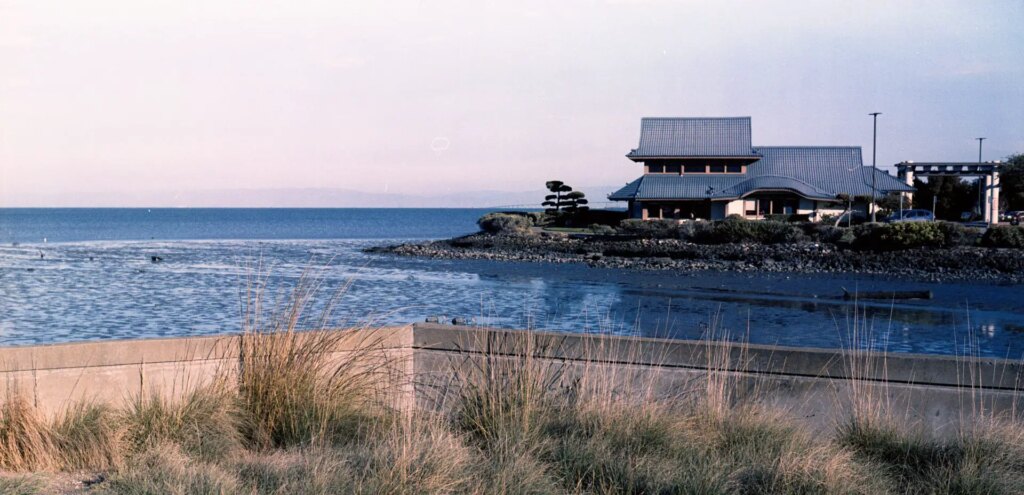
So did I find my ultimate 6×9 folder? Probably yes. I especially like the Franka Rolfix for its compact size, light weight, excellent lens, simple operation, and 6×6 support. But I enjoy all the contenders in this article: in the right hands, they can all produce stunning photos while you are out and about. Happy shooting!
PS: thank you for reading my articles, and you’re welcome to check out my photography work on flickr
Share this post:
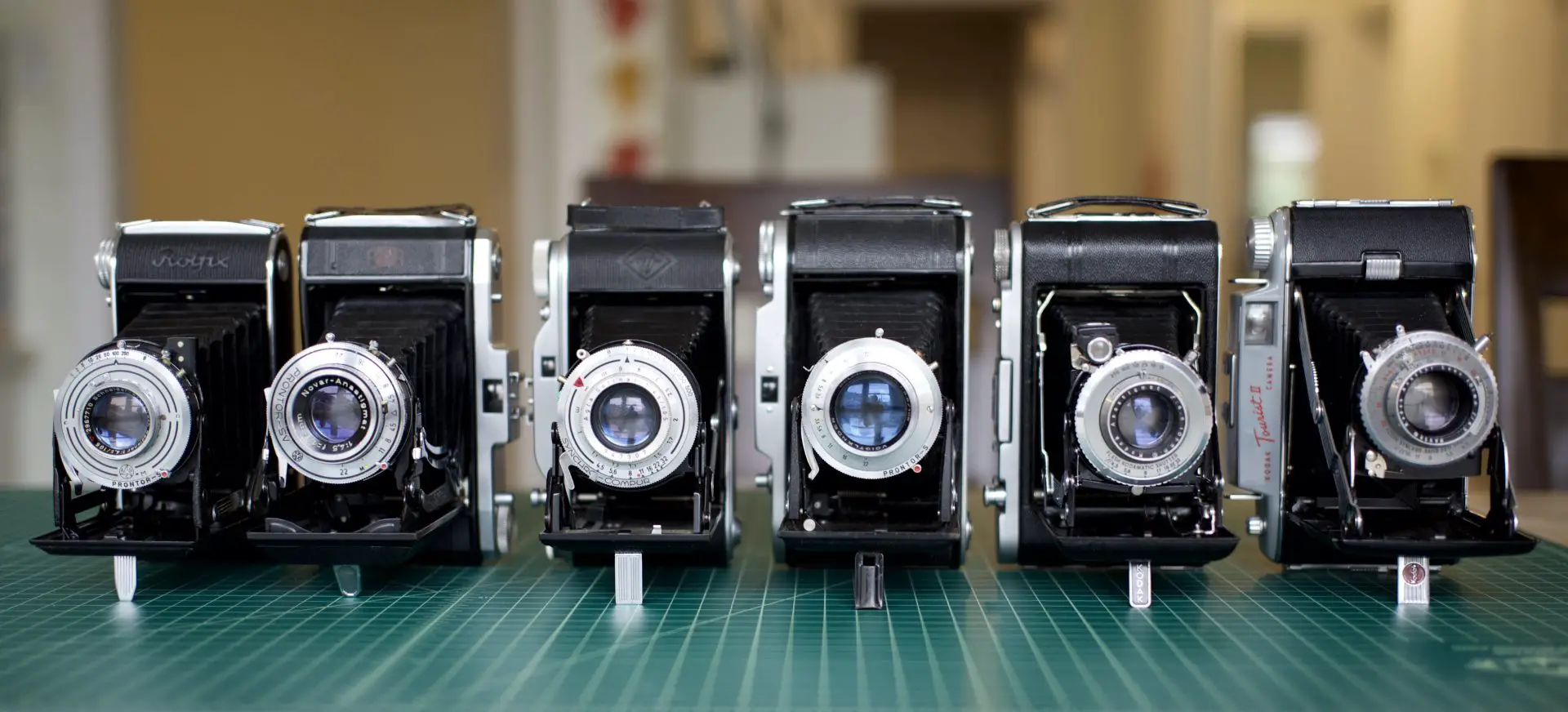








Comments
Nick Lyle on Finding my ideal 6×9 folder – Largest Negative in a Compact Travel Format – by Zheng Li
Comment posted: 20/01/2023
Comment posted: 20/01/2023
JAMES LANGMESSER on Finding my ideal 6×9 folder – Largest Negative in a Compact Travel Format – by Zheng Li
Comment posted: 20/01/2023
James
Comment posted: 20/01/2023
Baron Schwartz on Finding my ideal 6×9 folder – Largest Negative in a Compact Travel Format – by Zheng Li
Comment posted: 20/01/2023
Comment posted: 20/01/2023
Sean Mahan on Finding my ideal 6×9 folder – Largest Negative in a Compact Travel Format – by Zheng Li
Comment posted: 21/01/2023
Comment posted: 21/01/2023
davesurrey on Finding my ideal 6×9 folder – Largest Negative in a Compact Travel Format – by Zheng Li
Comment posted: 21/01/2023
I have a Bessa I and Bessa II both of which I bought before prices went crazy.
I love then both but would like to get a Zeiss Super Ikonta 531/2 to compare with the Bessa II but they seem rare and hence expensive.
So perhaps I'll see if a decent looking Moskva 5 comes up in the meantime.
Comment posted: 21/01/2023
Rowsdower on Finding my ideal 6×9 folder – Largest Negative in a Compact Travel Format – by Zheng Li
Comment posted: 21/01/2023
Comment posted: 21/01/2023
Lee on Finding my ideal 6×9 folder – Largest Negative in a Compact Travel Format – by Zheng Li
Comment posted: 24/01/2023
Benjamin on Finding my ideal 6×9 folder – Largest Negative in a Compact Travel Format – by Zheng Li
Comment posted: 30/01/2023
Alessandro Bellafiore on Finding my ideal 6×9 folder – Largest Negative in a Compact Travel Format – by Zheng Li
Comment posted: 25/02/2023
A strong candidate for me was the Moskva 5. If you can find one with the elusive mask you get a camera with a tessar-like lens, which can take 6x6 and 6x9. Two cameras in one!